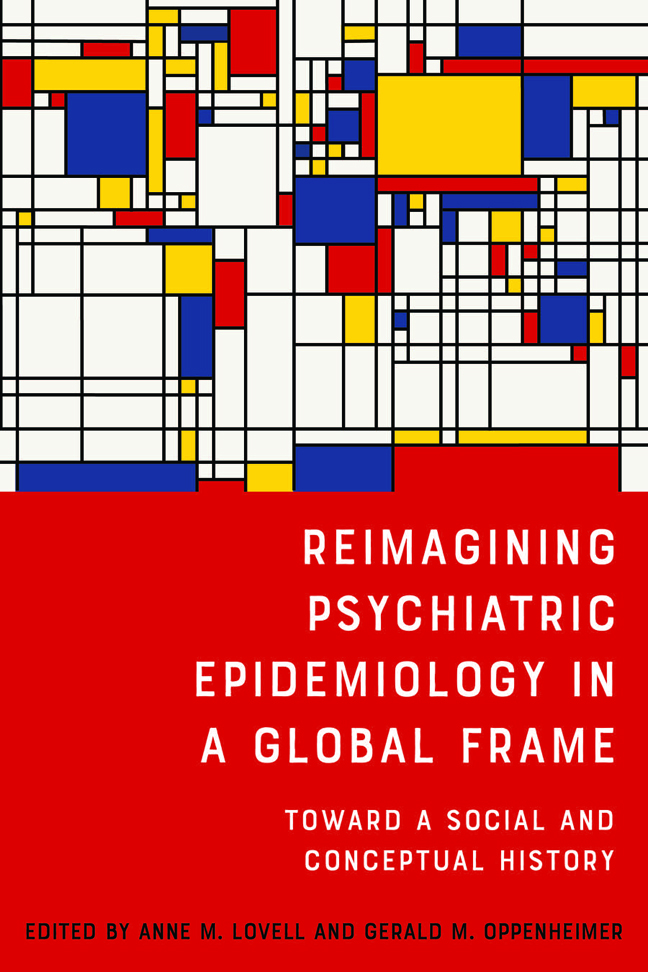Book contents
- Frontmatter
- Contents
- Acknowledgments
- Introduction
- Part One Constructing Mental Health Utopias and Dystopias with Epidemiology
- Part Two Troubling the Boundaries of Psychiatric Epidemiology
- Part Three Decentering Psychiatric Epidemiology in a Postcolonial World
- Selected Bibliography
- Notes on Contributors
- Index
Four - When Risk Factor Epidemiology Met Mental Health: The Narrative of Cardiovascular Disease and the Type A Personality Pattern
Published online by Cambridge University Press: 15 February 2024
- Frontmatter
- Contents
- Acknowledgments
- Introduction
- Part One Constructing Mental Health Utopias and Dystopias with Epidemiology
- Part Two Troubling the Boundaries of Psychiatric Epidemiology
- Part Three Decentering Psychiatric Epidemiology in a Postcolonial World
- Selected Bibliography
- Notes on Contributors
- Index
Summary
Clue: Like workaholics
Answer: Type A
—“New York Times Crossword,” December 25, 2018In the decades following World War II, epidemiology developed a signature approach to chronic, noncommunicable disease, namely, seeking multiple independent risk factors as possible determinants of a particular clinical outcome. The risk factor paradigm developed within a medical and public health context marked by a decline in deaths from infectious disease and a sharp rise in mortality from cancer and heart disease. Proponents of this risk factor approach employed and further developed this model within the framework of now classic case-control and cohort studies. Sometimes referred to as the “black box” model because the underlying pathophysiology of most chronic diseases was poorly understood, the paradigm, in the words of Mervyn and Ezra Susser, “related exposure to outcome without any necessary obligation to interpolate … intervening factors.”
In the absence of cure or even effective treatment, the public health imperative was to capitalize on knowledge about risk factors and to test efforts to prevent or forestall the clinical onset of chronic diseases. Search and discovery of such factors was famously used by epidemiologists to link cigarette smoking to lung cancer, and, in a more sophisticated form, to expose the multiple variables that contributed to coronary heart disease (CHD)—and then to launch primary prevention campaigns. CHD, perceived as epidemic in the United States since the 1940s and responsible for over one-third of all US deaths by 1960, had been the leading cause of US mortality since the 1920s. For heart disease, researchers, ignorant of its cause, seeking potentially modifiable risk factors, including behavioral patterns, was imperative.
Risk Factor Epidemiology, Psychiatric Epidemiology
In addition to heart disease, risk factor epidemiology proved useful in many areas, but, generally, that was not the case in American psychiatric epidemiology. As epidemiologists Ezra Susser and Alfredo Morabia observed, until recently, “the enormous potential of risk factor methods for revealing the causes of mental disorders remained largely untapped.” There were some exceptions. Several research groups in Great Britain had already pursued what would become risk factor epidemiology in the decades following World War II. Two specific initiatives warrant mention. Starting in the late 1950s, investigators conceptualized mortality not simply as the end of a disease process but as a risk factor for survivors’ mortality and morbidity.
- Type
- Chapter
- Information
- Reimagining Psychiatric Epidemiology in a Global FrameToward a Social and Conceptual History, pp. 139 - 166Publisher: Boydell & BrewerPrint publication year: 2022



